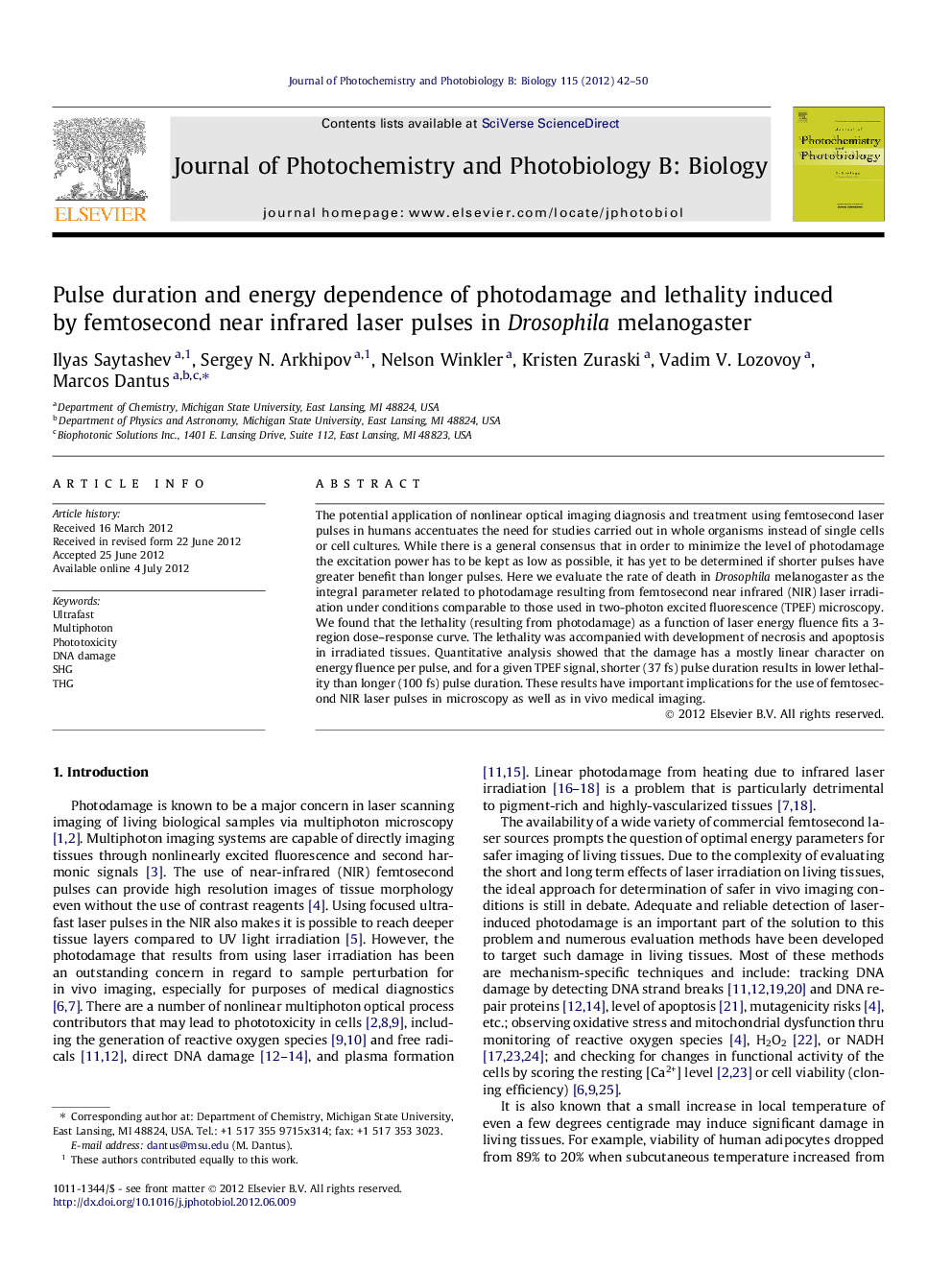| کد مقاله | کد نشریه | سال انتشار | مقاله انگلیسی | نسخه تمام متن |
|---|---|---|---|---|
| 29505 | 44415 | 2012 | 9 صفحه PDF | دانلود رایگان |

The potential application of nonlinear optical imaging diagnosis and treatment using femtosecond laser pulses in humans accentuates the need for studies carried out in whole organisms instead of single cells or cell cultures. While there is a general consensus that in order to minimize the level of photodamage the excitation power has to be kept as low as possible, it has yet to be determined if shorter pulses have greater benefit than longer pulses. Here we evaluate the rate of death in Drosophila melanogaster as the integral parameter related to photodamage resulting from femtosecond near infrared (NIR) laser irradiation under conditions comparable to those used in two-photon excited fluorescence (TPEF) microscopy. We found that the lethality (resulting from photodamage) as a function of laser energy fluence fits a 3-region dose–response curve. The lethality was accompanied with development of necrosis and apoptosis in irradiated tissues. Quantitative analysis showed that the damage has a mostly linear character on energy fluence per pulse, and for a given TPEF signal, shorter (37 fs) pulse duration results in lower lethality than longer (100 fs) pulse duration. These results have important implications for the use of femtosecond NIR laser pulses in microscopy as well as in vivo medical imaging.
► We evaluated the lethality induced by femtosecond near infrared laser in fruit flies.
► The lethality was associated with photodamage manifested in necrosis and apoptosis.
► Lethality as a function of energy fluence fits a sigmoidal-shape dose–response curve.
► For a given 2-photon excited signal, shorter laser pulses induce less photodamage.
► Quantitative analysis of data revealed that photodamage scales linearly with laser energy implying it is mostly a thermally driven process.
Journal: Journal of Photochemistry and Photobiology B: Biology - Volume 115, 3 October 2012, Pages 42–50